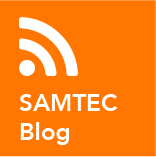RoHS and Lead-Free
What are ELV, WEEE, RoHS and Penta/Octa?
ELV (EU Directive 2000/53/EC) The End of Life Vehicles Directive aims to reduce the amount of environmentally unfriendly waste from ELVs.
WEEE (EU Directive 2002/96/EC) The Directive on Waste Electrical and Electronic Equipment.
RoHS (EU Directive 2002/95/EC) The Reduction of Certain Hazardous Substances. Lead, Cadmium, Mercury, Hexavalent Chromium, Polybrominated Biphenyls (PBBs) and Polybrominated Diphenyl Ethers (PBDEs) are banned from most electronic products offered for sale in Europe effective July 1, 2006.
Penta/Octa (EU Directive 2003/11/EC) This directive bans the use of PentaBDEs and OctaBDEs. This directive is currently in effect in EU. The two banned substances are fire retardant additives (Pentabromo diphenyl ether and Octabromo diphenyl ether).
What is driving the move to RoHS compliant/lead free (Pb-free) products?
In an effort to reduce the amount of electronic waste spreading across European landfills, the European Union (EU) has banned most electronic products containing intentionally added lead and other hazardous chemicals.
Why ban lead?
Lead is only 1 of 6 banned substances. But because it has many different uses lead is the most prominent substance detailed in the RoHS directive for Electronic and electrical equipment manufacturers to be concerned about. Lead is a core component of the solder that goes into the manufacture of printed circuit boards (PCBs). PCBs are increasingly used in everyday household items, from toasters to DVD players and are increasingly finding their way into landfills across the world. The acidity of rainwater washes the solder lead from crushed PCBs. The lead can eventually end up in drinking water supplies. Lead can affect almost any organ and system in the body. The most sensitive is the central nervous system, particularly in children. Lead can also damage the kidneys and reproductive system, and cause anemia.
Is this legislation global?
While the implementation deadlines form part of the EU legislation, the need to comply will evolve globally. It is unlikely that electronics manufacturers will make “lead free” components for Europe and lead-based components for the rest of the world.
Does this affect Samtec products?
Yes, but it depends on the part number. WEEE impacts packaging materials as well as products.
Do Samtec products contain quantities of Cadmium, Hexavalent Chromium, Mercury, Lead, Polybrominated Biphenyls (PBBs), Polybrominated Diphenyl Ethers (PBDEs), PentaBDEs or OctaBDEs?
Generally speaking Samtec products do not contain Hexavalent Chromium, Mercury, PBBs, PBDEs, PentaBDEs or OctaBDEs. It is possible unintentionally added, inherent, trace or near trace amounts of Cadmium and Lead may be contained in Samtec products. At this time, Samtec cannot claim that all packaging materials are compliant with the RoHS and/or WEEE Directives.
Do you have a policy statement on the lead-free environmental issue? Is this available on-line?
Yes. You may also download the latest Samtec Environmental Policy.
Will Samtec provide a formal RoHS CoC (Certificate of Compliance) for their products?
Yes, upon request, Samtec will provide a formal CoC. Please provide Company name and address as well as Company contact and contact information of the person requesting the CoC along with valid Samtec part numbers to our
General Technical Support Group.
What lead-free plating is available on Samtec products?
The majority of our plating is lead free and/or RoHS compliant. CLX products or any contact that is pre-plated may not be compliant. Depending on the part number, plating call out and the processing temperatures you may need to choose a Matte Tin finish. Bright Acid Tin will discolor at the elevated processing temperatures of lead-free, reflow soldering and will need to be changed to Matte Tin (TM, LM, FM or SM plating designations). The plating options should be listed in the catalog and/or on the print.
Is Samtec’s gold plating always lead-free and RoHS compliant?
Yes, Samtec’s gold plating is always lead-free and RoHS compliant (pre-plated or in house plated).
Are there any other technical or product specifications that are likely to be affected?
This depends on the part number. If a part contains intentionally added lead, or if the processing temperatures are increased and the current insulator can’t withstand those temperatures, the composition of the part must be altered to accommodate the elevated temperatures and eliminate the intentionally added lead (unless there is an approved Directive exemption as in the case with the brass alignment pins). This would require a part number change.
Are Samtec lead-free parts compatible with the elevated temperatures of lead-free processing?
It depends on the part number. In the left hand margin of the catalog pages under specifications, you will find the processing information. Reflow processing will need a high temp body and matte tin finish. Samtec recommends through hole parts that have a high temp insulator be changed to matte tin as well.
What is the MSL (Moisture Sensitivity Level) classification of your lead-free products? Do your parts comply with J-STD-020C?
J-STD-020C refers to the moisture sensitivity of SMT electrical components. There is no relation or connection to the RoHS Directive. Generally speaking, the MSL is not a concern for Samtec parts. We classify all of our SMT parts as MSL Level 1. J-STD-020C is not applicable for through hole parts.
Will your lead-free parts / packaging be marked lead-free, do you comply with JEDS97?
As of October 2005, Samtec is providing a Directive compliancy label on the lowest level shipping container for the majority of products.
Are you intending to change your part-numbering system to reflect a change to lead-free?
It depends on the part number. If the part contains intentionally added lead or if higher processing temperatures will be used, you will need to ensure the plating finish and the insulator can withstand the elevated temperatures. In those cases yes, a part number change will be required.
Do you have a definitive date when lead-free parts will be introduced?
The majority of Samtec’s products are, or always have been, free of intentionally added lead unless specified otherwise by the customer. However, there are several products that are not currently compliant or have exceptions:
- IDSD/IDMD/HCXX cable assemblies - not compliant - expected to be compliant by late November 2005. The connector ends (plastic, pins and plating) are compliant.
- HDR products with leaded solder not compliant - can be ordered special as lead-free and RoHS compliant.
- Any solder ball product is not compliant if the solder balls are included in the part call-out (no current alternate lead-free, RoHS compliant solder ball).
- I-O products are not compliant (a few exceptions)... must check each part number to see if we have material information or declaration.
- Standard “CLX” products that use pre-plated pins are not compliant (must check part number to confirm status).
- Any product containing wire, cable, hardware such as screws, nuts, bolts, metal shields is suspect and should be verified.
Will there be an increase in lead times for lead-free products?
No.
Will there be an increase in the price of lead-free products?
No.
Are there any plans to obsolete any parts due to lead-free?
No.
Are material declarations available for your lead-free products? How do I get to them?
Yes. Currently, material declarations for the majority of Samtec products are available on our website. This accounts for 80% of the top selling products. Lead Free Product Materials Declaration.
Why are you recommending a change to Matte Tin plating?
A plating containing bright acid tin can discolor when exposed to the higher processing temperatures of lead-free, reflow soldering. Therefore it is recommended that the BAT be changed to change to Matte Tin. We are recommending that through hole parts with high temp insulators also be changed to a matte tin finish.
Are your products compatible with Pb assembly procedures (backwards compatible)?
Yes.
Are your products compatible with Lead Free processing?
This depends on the part number. The composition of the part determines the processing compatibility. You must determine if the part is free of intentionally added lead as well as ensuring that the insulator and plating finish can withstand the elevated processing temperatures.
Are you claiming exemptions for any parts?
Yes. Parts with brass components (such as brass Alignment pins) may contain intentionally added lead. The brass components (a copper alloy) contains a quantity of intentionally added lead within the 4.0 wt. % exemption of the RoHS Directive for copper alloys in electronic components.
Who is your specific contact/Project Manager regarding any technical or other issues?
Please direct all inquiries to the General Technical Support group.
Matte Tin
What is the difference between Matte Tin plating and Bright Tin plating?
The primary differences are:
- Temperature compatibility - Matte Tin is compatible with the elevated temperatures of lead-free, reflow processing (250–260C). Bright Tin has a tendency to discolor (turn dark) when exposed to the higher lead-free, reflow processing environment.
- Grain size - Matte Tin has a larger grain size than Bright Tin.
- Appearance - Matte Tin has a normal whitish “matte” surface appearance whereas Bright Tin has a bright (shiny) surface finish.
I am transitioning to lead-free processing. Why should I choose Matte Tin?
- Matte Tin is readily available and has a successful track record of reliability.
- Matte Tin is compatible with all existing lead-alloy and Pb-free solders and pastes.
- Matte Tin tolerates the higher process temperatures required for lead-free processing.
- The larger grain size of Matte Tin (as compared to Bright Tin) creates less stress in the plating. Stress in pure Tin plating may be a root cause of tin whisker formation and growth.
What is the composition of Matte Tin and Bright Tin?
The Matte Tin and Bright Tin platings applied by Samtec are essentially 100% pure Tin. The Matte Tin applied by Samtec contains approximately 0.015% co-deposited organics as opposed to Bright Tin with approximately 0.15% co-deposited organics.
Are Matte Tin and Bright Tin compliant with the European Union RoHS Directive?
The Matte Tin and Bright Tin platings applied by Samtec are compliant with the RoHS Directive (Directive 2002/95/EC).
Is Matte Tin compatible with leaded solder processes?
Matte Tin is backward compatible with leaded solder processing.
Will Matte Tin prevent Tin Whiskers from forming?
No high-Tin plating process can claim to be whisker-free. Copper/copper-alloy lead frames plated on a Nickel diffusion barrier are highly whisker resistant.
Does Samtec use a barrier plating or underplating with Matte Tin?
All finish platings applied by Samtec are preceded by a Nickel diffusion barrier. Generally speaking, the thickness of the Nickel barrier underplating is 50 micro-inch minimum.
What is the thickness of the Matte Tin plating applied by Samtec?
The thickness of the Matte Tin plating is part specific. The majority of products will have a minimum 150 micro-inch to 350 micro-inch plating thickness.
Is there a price penalty for Matte Tin?
Presently, Samtec does not anticipate a price difference between Bright Tin and Matte Tin.
Will specifying Matte Tin impact my lead times?
The lead times for the majority of Samtec products will not be affected by specifying Matte Tin plating.
Can I continue to order product with Bright Tin plating?
It is the intent of Samtec to continue to support customers requesting Bright Tin plating. Bright Tin will remain Samtec’s “standard tin plating” until March 1, 2006. After that date, if you prefer to specify Bright Tin plating, contact Samtec Customer Service at info@samtec.com for instructions.
Can I continue to order product with Tin-lead plating?
Consistent with our past history, it is the intent of Samtec to continue to support customers requesting Tin-lead plating. The Tin-lead plating designators “-TL” (Tin-lead) and “-STL” (Selective Tin-lead) will remain valid plating designators for part call-outs.
Will I receive a mixed shipment containing some Matte Tin plated parts and some Bright Tin plated parts?
No. Product will be shipped bearing the plating specified by the part call-outs in the customer order.

